Articles of 2004
Dr. Margaret Goodman Makes a House Call
Boxing is no game. The stakes are too high, the losses too finite, the terms too extreme to take lightly. I wanted to explore the dangers of boxing with someone in a position to know and contacted Dr. Margaret Goodman of the Nevada State Athletic Commission. We discussed the phenomenon of men boxing and what it does to their bodies and brains.
Margaret Goodman was born in Toronto and raised in LA. She went to medical school in Chicago and did her internship and residency in neurology at UCLA. Goodman moved to Vegas in 1988 in a search of adventure and found it in an unlikely place. She has been a member of the Nevada State Athletic Commission since 1994.
“I have a regulatory job with the Athletic Commission. I’ve been appointed by the governor to be the Chairman of the Medical Advisory Board of the Commission,” Goodman said. She sets policy on medical testing and medical evaluation of fighters. She has a private neurology practice. She works as a ringside physician.
“I started as a consultant to the NSAC in neurology, so when they had issues about fighters that had been knocked out or whether or not fighters should continue their careers, I would be a consultant they would use,” she said. “For example, I examined George Foreman and Meldrick Taylor years ago, Tommy Hearns years ago.”
After working the amateurs for a year and a half, she became a ringside doc for the pros. Since then she has worked more than 400 fights.
“I think of myself as an advocate for the fighters,” Goodman said. “I think I’m probably the most independent advocate they can have there. In a boxing situation you have all kinds of people that are surrounding the ring that are there for various reasons. You’ve got the fighter’s trainer; the fighter’s cornermen; maybe you’ve got their manager and promoter; you’ve got the TV people; you’ve got the journalists and print people; you’ve got the photographers; you’ve got the commission; and I try to be the independent person there that tries to stay out of the fight as much as possible. I believe that the ring doctor should try to be seldom seen or heard. I’m really there if a situation arises where the referee needs assistance determining whether or not a fight should be stopped or not, or if there’s a medical situation with a fighter, an emergency situation.”
Emergency situations arise during the fights. The most obvious, because they’re the most visible, are cuts and bleeding.
“I think that there are very few instances where a cut, in and of itself, stopped the fight. Nobody’s ever really dies from a cut in the ring,” Goodman said. “It’s the head injuries you have to worry about, the concussions, anything involving the brain. In most instances, I never stop a fight based on just the cut itself. But other things come into play. How is the fighter handling the cut? Is that fighter otherwise losing the fight? Does that fighter have a corner that doesn’t know how to take care of that cut? Is the fighter no longer able to protect himself? If allowing the fight to continue, would that cut lead to a potential permanent disability or a permanent deformity? That’s kind of what you’ve got to take into play. Usually you’ve got leeway with a cut.”
Another injury that plagues fighters is damage to the hands. I asked Goodman if she thought a broken hand is a good enough reason to stop a fight.
“An orthopedic injury from a shoulder, from a hand, from a nose, from a jaw,” she explained, “none of those kinds of orthopedic or bony problems would stop a fight. I’ve seen an instance where a fighter broke his ankle or had such a bad problem with his knee and he couldn’t balance himself and could no longer protect himself that the fight had to be stopped. Hand injuries are impossible for a ring doctor to evaluate during a bout, because fighters have gloves on. There’s no way to assess that. So in most instances an orthopedic injury doesn’t stop a fight. The only time when an orthopedic injury would result in a stoppage would be if a fighter can no longer protect himself or chooses to retire. Then it becomes the fighter deciding to stop the fight and not the referee and ring physician.”
Aside from cuts and broken bones, fighters suffer internal injuries. Blows to the head will do it, as will blows to the body.
“In boxing, internal organ injuries don’t really ever become that much of an entity. I’ve heard of maybe one case where someone actually ruptured a spleen,” Goodman said, “but I think that was a very special circumstance. You do see a lot of fighters peeing blood after a fight. And definitely after a twelve-round tough fight. It’s classic. You might see a fighter and they’ll be peeing in a cup to do their drug test and it’s bright red. It’s usually from the kidney shots.”
I read of a study where autopsies were performed on college boxers, on amateurs, and all of them had brain damage. I guess it goes with the territory.
“Most people like to think that amateur boxing isn’t as tough as professional boxing, but in a lot of ways amateur boxing can be just as bad, if not worse from a neurological standpoint, because there’s that false impression of safety by wearing headgear. Headgear does not protect the brain from damage at all. Studies have shown that. Headgear can actually contribute to brain injuries, because of the weight it adds on the head. It is one of the things that can cause concussions or cause injuries to the brain and can definitely contribute to knockouts. What happens with headgear, especially in training and in the gyms, fighters start to sweat into it, it becomes heavier and actually creates kind of like a fulcrum, where blows become more easily felt.”
These are things most of us don’t think about if we don’t have to, but it’s reassuring that someone is watching the fighters’ backs.
“I know that Harvard and UC San Francisco are going to join forces to do a study on mortality in boxing and look at some of the statistics,” Goodman said. “Unfortunately, boxing is not like the NFL and NHL, where they actually do study the athletes to try to determine when someone should quit the sport or when someone should no longer be participating. But things have changed. Fighters used to fight more often. Fighters would train differently in the gym. They wouldn’t take time off between fights and fights would be endless numbers of rounds. Doctors and referees wouldn’t stop fights as readily. There’s much more acuity as to when a fight needs to stop, because it used to be that the venues didn’t want to see the doctors, they didn’t want to know where the ambulance personnel was, they didn’t want to know anything. They didn’t want anybody to get the impression that boxing was unsafe. And now that couldn’t be farther from the truth. Now everybody wants to know that things are as safe as possible.”
Safety is a good idea in all walks of life, but boxing turns that concept on its head.
“We know that boxing isn’t safe and will never be completely safe, because it’s a combat sport, but I think things are not as bad as they were. But is it good for anyone to get hit in the head?” Goodman asked. “Of course not. So that’s the other side of the coin. Whether they’re wearing headgear or not. There are better ways to prevent damage to the brain and there are a lot of things the fighter can do to prevent that and a lot of that comes from their training regimen, their strength, their nutrition, strong neck muscles, a good mouthpiece, a good chin tuck. There are a lot of things that someone can control that can help prevent head injuries. If you look at fighters, how many minutes is the fighter in his career really spend in a fight? Not that many when compared to the hours and hours, days and months and years of them training in the gym. But getting hit in the head during training doesn’t make it easier for you to get hit in the head during an actual fight.”
Even for a body shot junkie, head shots are the thing. There’s no faster way to put a man down on the canvas and out of this world. The sport of boxing would be nothing, a mere exhibition, without the knockdown, without the knockout.
“There’s a whole bunch of different ways someone can get knocked down,” Goodman said, “but technically what’s happening is there’s a transient or temporary disruption in the circulation to the brain. Your body has a protective mechanism that when something happens that possibly places your brain at risk, your brain wants you on the ground, supine, to let the blood flow go back to the brain. You know when someone faints you want to put their legs up? That’s so the blood will rush back up to the head. So it’s the same kind of thing in reverse that happens in a knockdown. A knockout can be a whole bunch of different things, depending on how the knockout is given to the fighter. It can occur from different ways. Different parts of circulation of the brain can be disrupted. Sometimes there’s an awareness center at the back of the brain that controls alertness and depending if that part of the circulation to the brain is disrupted, you’ll just lose consciousness instantly. Almost always that will return, but that again is a transient phenomenon.”
That is one transient phenomenon the fans adore.
“In the stands when they ‘ooh’ and ‘ah’ when they see the head rotate, you’re actually cutting off the circulation to the brain, depending on how that head is rotating and in which direction. What happens is when the brain gets subjected to trauma, it can change not only the blood flow, but also changes how your cells are reacting in your brain, and that can make you a little dingy, you know, not kind of like all with the program.”
It can’t be easy enjoying the fights knowing what’s happening to our favorite fighters.
“As a neurologist I could tell you I have learned more neurology sitting ringside watching what happens to a fighter when they’re getting hit than I could have ever learned in any hospital.”
That seems like one helluva way to get an education, but the School of Hard Knocks has its charms.
“I think boxing is incredibly beautiful. It’s a beautiful sport to watch. It certainly is one of the purest sports,” Goodman said. “The other thing that attracts me to boxing is the drama. I love the drama. There’s nothing more dramatic than two fighters in the ring – and nothing more courageous.”
-

 Featured Articles3 weeks ago
Featured Articles3 weeks agoAvila Perspective, Chap. 330: Matchroom in New York plus the Latest on Canelo-Crawford
-
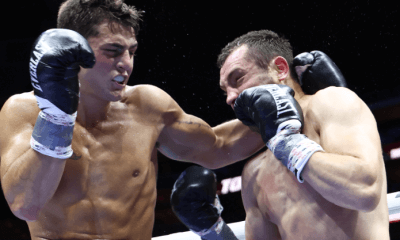
 Featured Articles1 week ago
Featured Articles1 week agoVito Mielnicki Jr Whitewashes Kamil Gardzielik Before the Home Folks in Newark
-
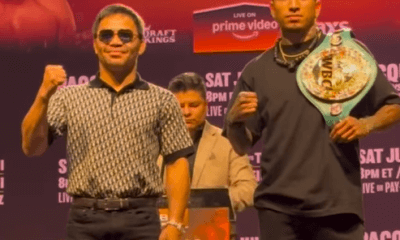
 Featured Articles4 weeks ago
Featured Articles4 weeks agoAvila Perspective, Chap 329: Pacquiao is Back, Fabio in England and More
-
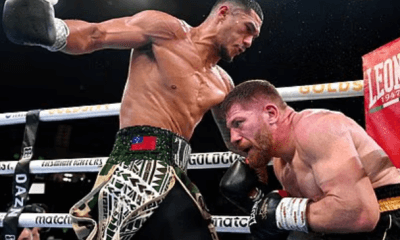
 Featured Articles3 weeks ago
Featured Articles3 weeks agoOpetaia and Nakatani Crush Overmatched Foes, Capping Off a Wild Boxing Weekend
-

 Featured Articles2 weeks ago
Featured Articles2 weeks agoCatching Up with Clay Moyle Who Talks About His Massive Collection of Boxing Books
-

 Featured Articles3 weeks ago
Featured Articles3 weeks agoFabio Wardley Comes from Behind to KO Justis Huni
-
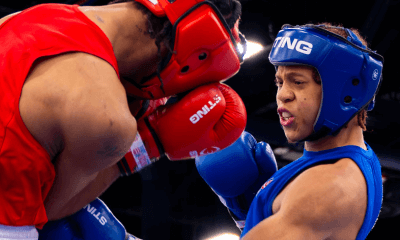
 Featured Articles1 week ago
Featured Articles1 week agoMore Medals for Hawaii’s Patricio Family at the USA Boxing Summer Festival
-
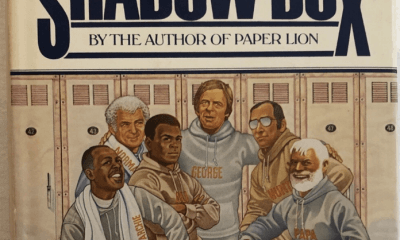
 Featured Articles4 weeks ago
Featured Articles4 weeks agoDelving into ‘Hoopla’ with Notes on Books by George Plimpton and Joyce Carol Oates















